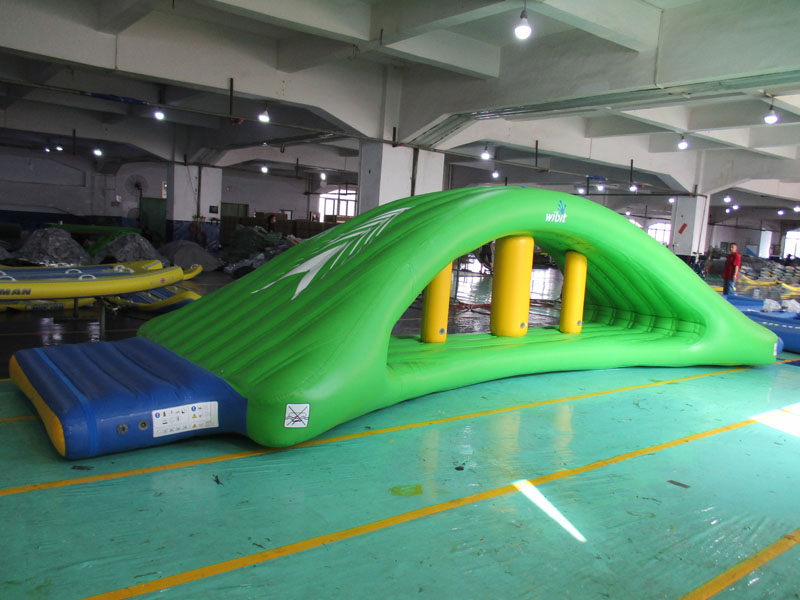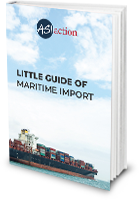Furniture made in China can offer great value for money for professional buyers, but it’s important to understand the risks and standards in place to avoid any surprises.
Purchasing furniture from China is an interesting option for professionals looking to save money while offering quality products to their clients. China is indeed the world’s leading furniture exporter and is a country where production costs are generally lower than in other countries, which can result in lower sales prices for professionals. However, it’s important to take some precautions when buying furniture from China to ensure the quality and safety of the purchased products.
In this blog article, we will provide you with tips for finding furniture suppliers in China, as well as information on the standards and regulations related to importing furniture from China for professionals.
Why import furniture from China?
There are several reasons why a professional might choose to import furniture from China:
- Lower production costs: China is known for having lower production costs than other countries, which results in lower sales prices for professionals. This allows companies to make significant savings on their furniture purchasing budget by choosing China.
- Diversity of products: China is a large producer of furniture and offers a great variety of products ranging from modern to traditional furniture. You can therefore find products to meet the needs and tastes of your clientele.
- Product quality: Despite quality concerns, many Chinese manufacturers offer superior quality products that meet international standards for quality and safety. You can ensure the quality of the products by doing research and working with reliable suppliers.
- Customization possibility: Some Chinese manufacturers offer the possibility of customizing furniture according to the needs and demands of professionals, which allows companies to offer exclusive products to their clientele. You can do everything in China by customizing your furniture.
- Competition: Importing furniture from China allows companies to differentiate themselves from the competition by offering competitively priced products while maintaining high quality standards.
It is important to note that importing furniture from China also involves risks that we will see in the next section. It is therefore important for professionals to conduct thorough research and work with reliable suppliers to ensure the quality and compliance of imported products.
Risks associated with importing furniture from China
- Quality issues: Imported furniture may not meet the quality standards in place in the importing country, leading to problems such as fragility and lack of durability. Furniture from China may also simply not meet your quality requirements. This is why it is crucial to perform checks on your merchandise in China.
- Security issues: Imported furniture may not meet the safety standards in place in the importing country, especially in terms of fire resistance and electrical hazards.
- Hidden costs: Importing furniture from China may result in hidden costs such as shipping and customs fees, which can significantly increase the final cost of the imported products. You must be aware of all costs to avoid any unpleasant surprises upon receipt of the goods.
- Communication problems: There may be communication problems with Chinese suppliers, which can make it difficult to resolve issues or plan orders. The language barrier, time difference are major obstacles to buying in China. That is why there are on-site agents who travel for you to facilitate communication.
- Delivery problems: Shipping times can vary greatly and be uncertain, which can lead to delays in delivery and problems for your business.

Tips for buying furniture in China
Here are some tips to follow when buying furniture in China for professionals:
- Do your research: Before making a purchase, make sure you know the different options available to you and compare prices. It’s also important to stay informed about current market trends so you don’t end up with outdated products.
- Work with reliable suppliers: When buying in bulk, it’s important to work with reliable suppliers who have a good reputation in the market.
Check certifications: Ensure that the furniture suppliers you are considering using have the appropriate certifications, such as CE, ISO, FSC, etc. These certifications guarantee that the furniture meets quality and safety standards.
Check quality: When shopping online, it’s difficult to know what to expect in terms of quality. Make sure to check the materials used in furniture production and request samples to get an idea of product quality.
Request samples: Before placing an order, request samples of furniture from your potential suppliers. This will allow you to verify product quality and ensure they meet your requirements.
Be aware of hidden costs: When buying furniture from China, it’s important to take into account all purchase-related costs, including shipping and customs duties. Make sure to know all costs before making a purchase to avoid any surprises when the furniture arrives at its final destination.
Check regulations in place: Before making a purchase, make sure to be aware of the regulations in place in your country regarding furniture import. It’s important to inform yourself on quality and safety standards in place to ensure compliance with rules. The standards in place in Europe and the US will be cited below.
By following these tips, you should be able to make a safe purchase of furniture from China.
Find a furniture supplier in China
Where to find a Chinese furniture supplier?
- Professional trade shows: Professionals can attend trade shows such as Canton Fair or China International Furniture Fair (CIFF) to meet furniture manufacturers and suppliers in China. These trade shows allow professionals to discover the latest furniture trends and innovations and to meet potential suppliers. However, after meeting a manufacturer at these trade shows, it is still recommended to secure your purchases by conducting a company audit with the company you have interacted with and conducting quality control during and after production.
- Online marketplaces: There are many e-commerce sites such as Alibaba, Global Sources, or Made-in-China that allow professionals to find furniture manufacturers and suppliers in China. These sites offer thousands of products and allow professionals to search for suppliers based on their needs and budget.
- Sourcing agents: You can also work with China-based sourcing agents who can help you find furniture manufacturers and suppliers in China. Sourcing agents can also help you navigate cultural differences and language barriers and can also negotiate prices and payment terms on your behalf.
It’s important to note that when searching for furniture suppliers in China, it’s crucial to conduct factory audits to ensure the quality and reliability of the suppliers. It’s also important to request samples to verify the quality of the products before placing a large order.
How to evaluate the reliability and quality of furniture suppliers in China?
China is a major global supplier of furniture, with factories producing a wide variety of products ranging from modern furniture to traditional solid wood products. However, finding reliable and quality furniture suppliers in China can be a challenge, especially for foreign companies that don’t have the experience or resources to conduct thorough research.
There are several methods to evaluate the reliability and quality of furniture suppliers in China. Here are some key steps to follow to ensure that you are doing business with trustworthy suppliers:
- Visit the factories: If possible, visit the suppliers’ factories to get an idea of their facilities and production process. This will allow you to check if the facilities are clean and well-maintained, and if the employees seem competent and well-trained.
Check their experience: Experienced suppliers generally have a better understanding of the standards and regulations in place, as well as a better ability to ensure product quality. It is therefore important to check the length of time a supplier has been in business and their reputation before working with them.
Check certifications: Furniture suppliers in China may be certified according to international standards such as ISO 9001 (quality) and ISO 14001 (environment). These certifications ensure that suppliers meet strict quality and environmental standards.
Request samples: Request product samples to test them yourself and get an idea of the quality of the furniture offered.
Conduct quality checks during and after production: Inspect the quality of your production before it leaves the Chinese factory to ensure compliance with your requirements.
Finally, it is important not to base your evaluation of Chinese furniture suppliers solely on price, as a very low price can often indicate poor quality materials or unsafe manufacturing processes. It is therefore important to find a good balance between price and quality to ensure a satisfactory purchase.
By following these tips, you can ensure that you work with reliable and high-quality furniture suppliers in China to avoid any unpleasant surprises.
Standards and regulations for importing furniture from China
There are several standards and regulations to be followed when importing furniture from China. These standards aim to ensure the quality and safety of imported products, as well as to protect local consumers and businesses.
Here are some examples of standards and regulations that may apply to the import of furniture from China:
- Safety standards: imported furniture must comply with the safety standards in force in the importing country, including fire resistance and electrical safety. Furniture must also meet stability and strength safety standards to avoid the risk of falls or tipping.
- Quality standards: imported furniture must comply with the quality standards in force in the importing country, including resistance to wear and abrasion, resistance to mold and insects, and resistance to stains and scratches.
- Environmental standards: imported furniture may be subject to environmental standards, such as limiting the use of certain hazardous chemicals in furniture production.
- Health standards: imported furniture must comply with the health standards in force in the importing country, including limiting the use of certain hazardous chemicals in furniture production, which can be harmful to human health.
It is important to note that standards and regulations may vary from country to country, so it is important to consult the relevant authorities to know the standards in force in the importing country. It is also important to remember that imported furniture must comply with the standards and regulations of both the country of origin and the importing country.
It is recommended to work with reliable and experienced suppliers who can help you navigate the standards and regulations related to importing furniture from China, and ensure that imported products meet the required quality and safety standards.
U.S. Furniture Import Regulations
There are several regulations in the United States that apply to the importation of furniture to ensure the quality and safety of products.
ASTM
First, it is important to note that furniture imported into the United States must meet U.S. safety standards, such as the American Society for Testing and Materials (ASTM) standard for office and home furniture.
APHIS
The APHIS (Animal and Plant Health Inspection Service) standard applies to imports of wood and wood products, including furniture, to ensure that imported products do not contain pests or diseases that could cause damage to American forestry resources. According to the APHIS standard, imported wood products must be accompanied by a phytosanitary certificate issued by the competent exporting authorities, certifying that the products have been inspected and treated to eliminate pests and diseases.
It is important to note that this standard only applies to wood products and does not apply to plastic, metal, leather, etc. furniture.
CPSC
The Consumer Product Safety Commission (CPSC) is a federal agency in the United States that is responsible for protecting consumers from the risks of injury or death associated with consumer products. It is tasked with enforcing federal regulations related to product safety, including furniture.
CPSIA
The CPSIA (Consumer Product Safety Improvement Act) is an American law aimed at improving the safety of consumer products, including furniture. The CPSIA contains safety requirements for children’s furniture, such as fall resistance testing requirements for children’s beds and testing requirements for wood products to ensure they do not contain hazardous chemicals.
Tariff Act
The Tariff Act requires that all imported products to the United States comply with American standards and regulations. Importers are responsible for ensuring that the products they import comply with these standards and regulations.
TSCA
The TSCA (Toxic Substances Control Act) regulates the manufacture, use, and importation of hazardous chemicals in the United States. Furniture products containing TSCA-regulated chemicals must comply with the requirements of this law before being imported into the United States. Furniture importers must ensure that the products they import do not contain regulated chemicals and are in compliance with the requirements of this law.

European standards for furniture and mattresses
There are several regulations that apply to furniture in the European Union, which aim to ensure product quality and safety, as well as protect consumers and local businesses.
If you are considering importing furniture into the European Union, you must research the applicable standards and regulations. The two main standards for furniture imports are REACH and fire standards.
It should be noted that fire protection requirements depend on the commercial use of the furniture. Whether in a hotel, restaurant or residence, the requirements will not be the same.
The REACH regulation
This regulation aims to ensure consumer safety and environmental protection by limiting the use of hazardous chemicals in furniture. Furniture manufacturers and importers must register the chemicals they use and assess the risks associated with their use.
This European regulation aims to secure the manufacturing, importing, and use of chemicals in the European industry. This regulation covers substances contained in products such as textiles, electronic components, and FURNITURE.
The goal of this regulation is simple, no data, no market. This means that without knowledge on the substances used, they are prohibited from being placed on the market. The substances must therefore be registered and assessed to determine potential risks.
For furniture, chemicals can be contained in the cover such as fabric, PVC or PU (polyurethane). The products most affected by this regulation are padded chairs & stools, mattresses, and sofas.
EN 1335
EN 1335 Standard for Chairs: This standard defines the requirements for wear resistance, stability and strength for chairs. It also requires that furniture be labeled with information regarding their compliance with the standard.
EN 1021-1
EN 1021-1 standard is a European standard that covers safety requirements for upholstery materials and padding materials used in furniture in terms of fire resistance. It has two parts, Part 1 for upholstery materials and Part 2 for padding materials. Materials that meet the requirements of the standard are considered fire-resistant. It’s important to check the prevailing standards for the furniture you’re importing to ensure that they comply with the safety requirements in place in the importing country.
It’s important to note that this standard only applies to furniture intended for domestic or similar use and does not apply to furniture for professional use such as office furniture or community furniture.
EN 1022 and EN 581
Standard for sofas and armchairs (EN 1022) and for garden tables and chairs (EN 581), which defines the requirements for wear resistance, stability and strength.
EN 12520
EN 12520 standard for beds and sofa beds: This standard defines the fire resistance, stability and strength requirements for beds and sofa beds. It also requires that furniture be labeled with information about its compliance with the standard.
EN 1725
EN 1725 standard for cabinets and storage furniture: This standard defines the fire resistance, stability, and strength requirements for cabinets and storage furniture. It also requires that the furniture be labeled with information about their compliance with the standard.
EN 597-1
The EN 597-1 standard for adult mattresses, which defines the requirements for fire resistance, breathable performance, stability and strength.
EN 597-2
EN 597-2 is a European standard that defines safety requirements for fire-resistant padding materials used in adult mattresses. It covers materials such as foam, fibers, and feathers used in adult mattresses.
EN 1957
This is the EN 1957 standard for children’s bed mattresses, which outlines requirements for fire resistance, breathability performance, stability, and strength.
Directive 93/68/EEC
The Directive on Professional Use Furniture sets requirements for professional use furniture, such as office furniture and community furniture, to ensure their quality and safety.
WEEE
European Directive on Waste Electrical and Electronic Equipment (WEEE). This directive aims to limit the use of hazardous chemicals and to promote recycling and re-use of furniture by promoting sustainable practices in their design and end of life.
Tips for checking that imported furniture meets current standards and regulations
Check certifications and quality standards: Make sure the furniture imported from China meets international quality and safety standards. Also check if the furniture has been certified by recognized organizations such as CE, UL, SAA, etc.
Research the manufacturer: Make sure to work with reliable and well-known furniture manufacturers in China. Research their reputation and experience in the furniture industry.
Conduct quality inspections: Have quality inspections done before shipping the imported furniture to make sure they meet the standards and specifications requested. This is a very important aspect to not overlook when importing furniture from China, carry out a quality check before the furniture leaves the Chinese factory.
Find out more in our dedicated LinkedIn post
- Know customs regulations: Make sure you are aware of the customs regulations in place for importing furniture from China. Check the customs tariffs and applicable taxes to avoid any surprises.
- Work with a trusted partner: To avoid the risks and problems associated with importing furniture from China, work with a trusted partner who can help you manage the logistics and regulatory aspects of importing.
By following these tips, you can ensure that the furniture imported from China meets the standards and regulations in place, while benefiting from the economic benefits of importing furniture from China.
Conclusion
China furniture is becoming increasingly popular among international buyers due to its quality and affordable price. However, finding good furniture suppliers in China can be a difficult and risky task for foreign companies. That is where Asiaction comes in, a purchasing firm specializing in the Asian sourcing process since 2008.










